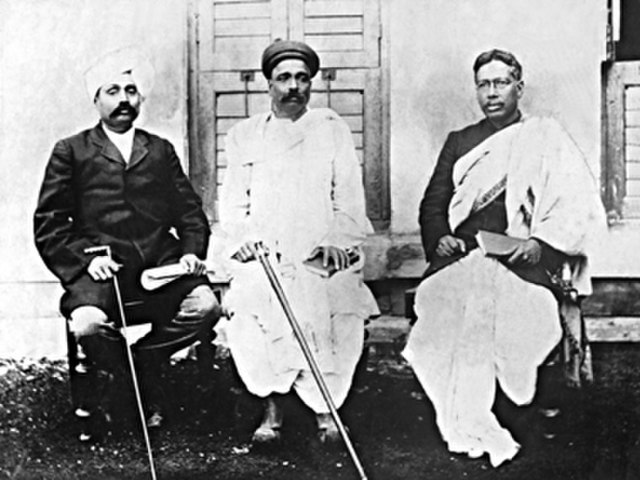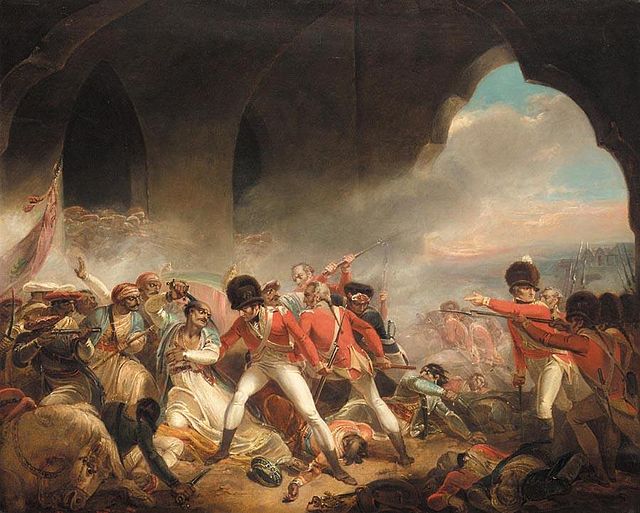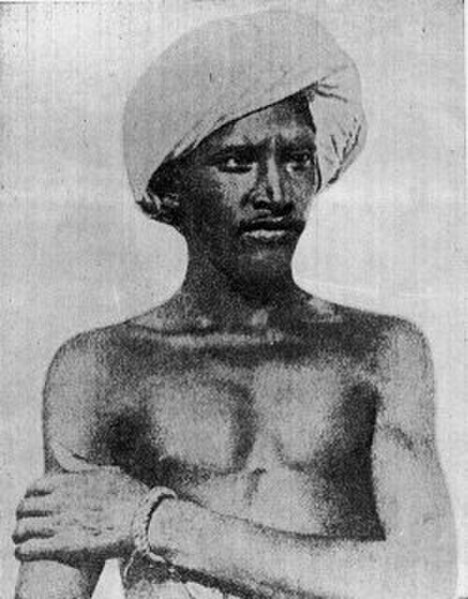Bipin Chandra Pal was an Indian nationalist, writer, orator, social reformer and freedom fighter. He was one third of the "Lal Bal Pal" triumvirate. He was one of the main architects of the Swadeshi movement. He is known as the Father of Revolutionary Thoughts in India. He also opposed the partition of Bengal by the British colonial government.
Bipin Chandra Pal
Lala Lajpat Rai of Punjab, Bal Gangadhar Tilak of Maharashtra, and Bipin Chandra Pal (right) of Bengal, the triumvirate were popularly known as Lal Bal Pal, changed the political discourse of the Indian independence movement.
Image: Bipin Chandra Pal 1958 stamp of India
Indian independence movement
The Indian Independence Movement, was a series of historic events in South Asia with the ultimate aim of ending British colonial rule. It lasted until 1947, when the Indian Independence Act 1947 was passed.
Robert Clive with Mir Jafar after the Battle of Plassey. Mir Jafar's betrayal towards the Nawab Siraj-ud-Daulah of Bengal in Plassey made the battle one of the main factors of British supremacy in the sub-continent.
The Last Effort and Fall of Tipu Sultan by Henry Singleton, c. 1800. After the defeat of Tipu Sultan of Mysore, most of South India was now either under the company's direct rule, or under its indirect political control.
Ganga Narayan Singh, leader of Bhumij rebellion
Birsa Munda, leader of Munda rebellion (Ulgulan)







